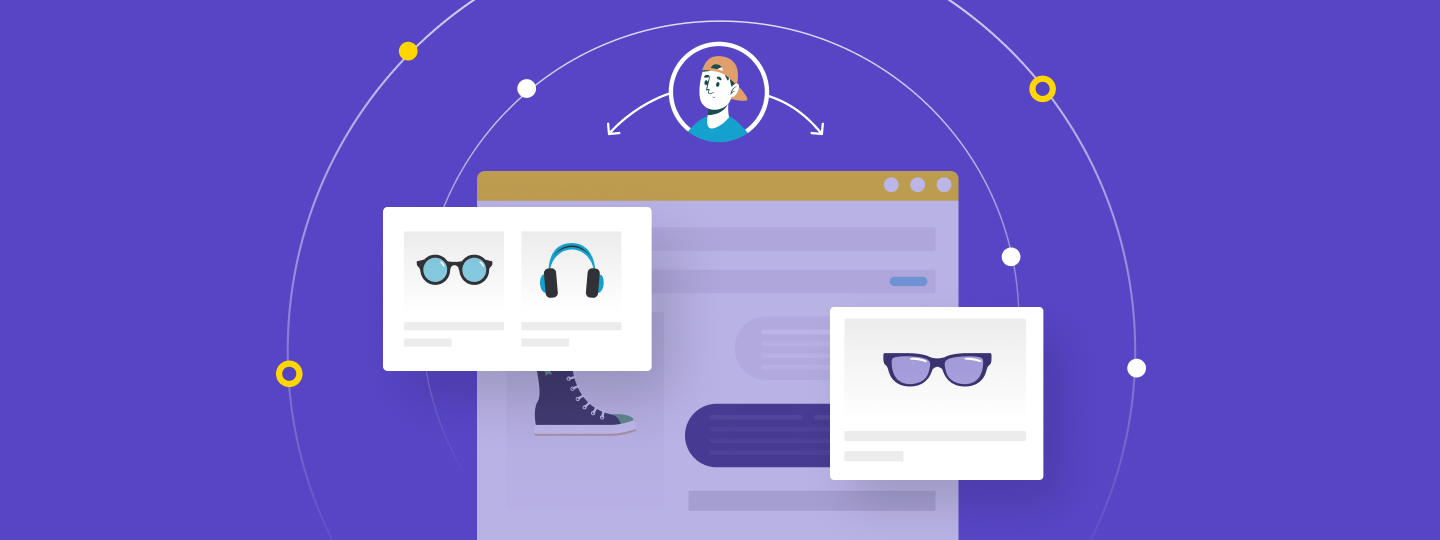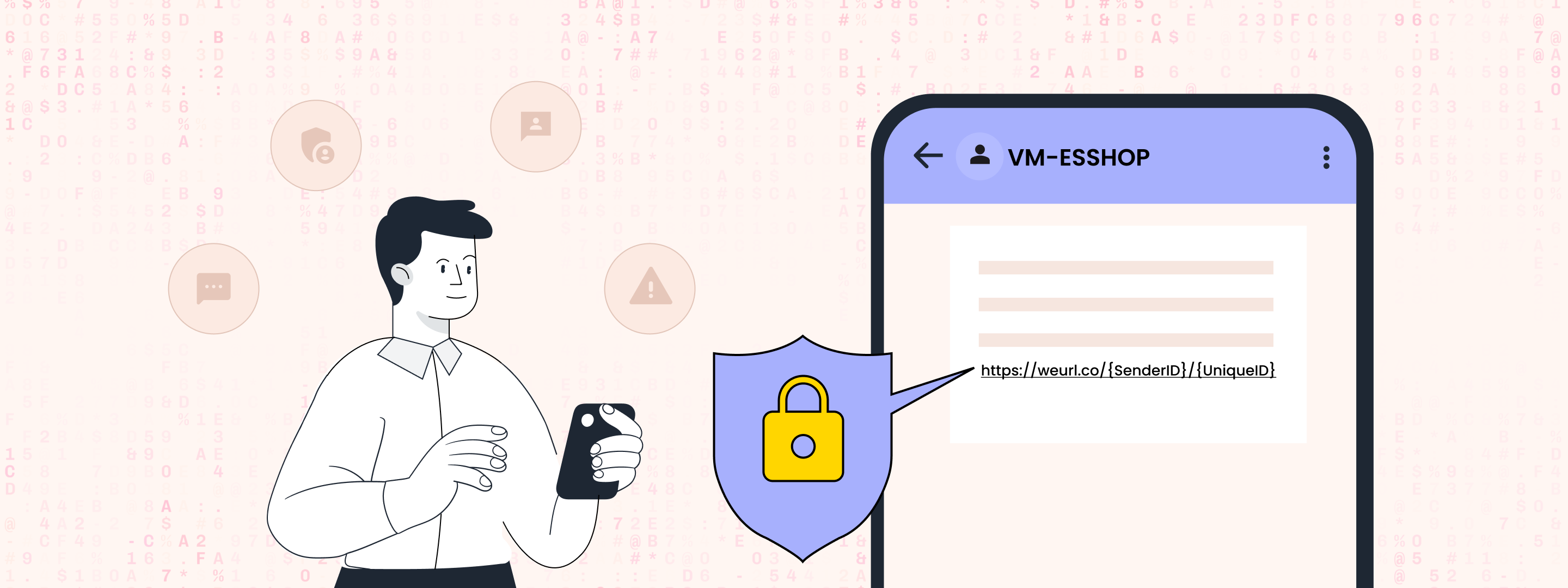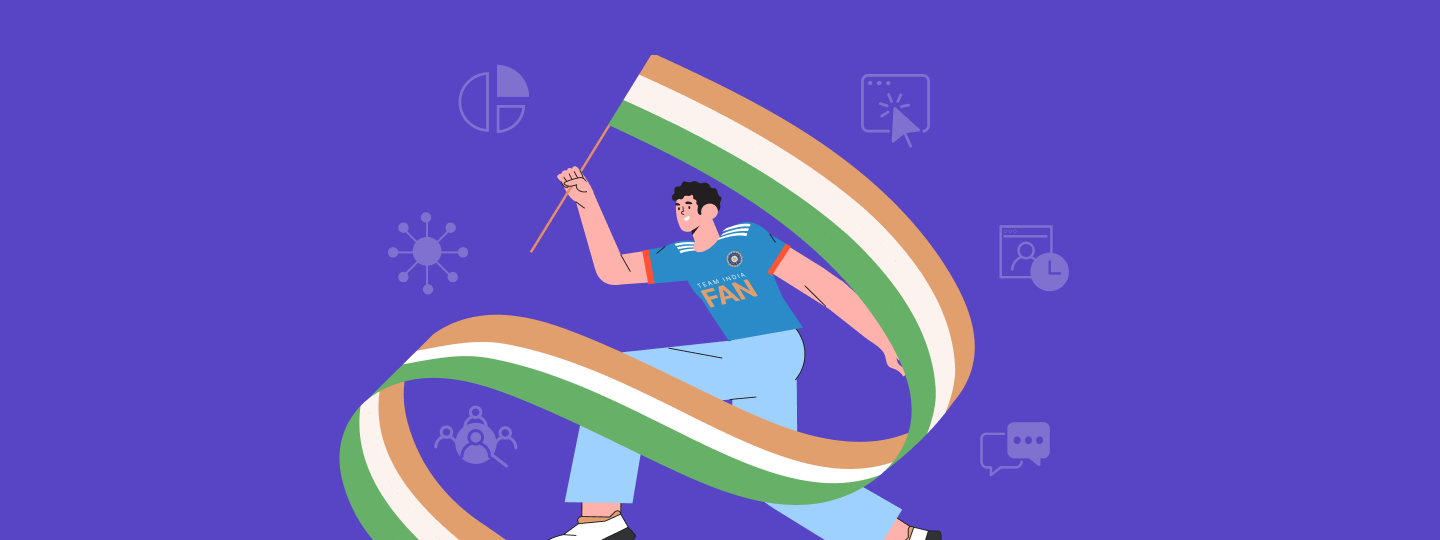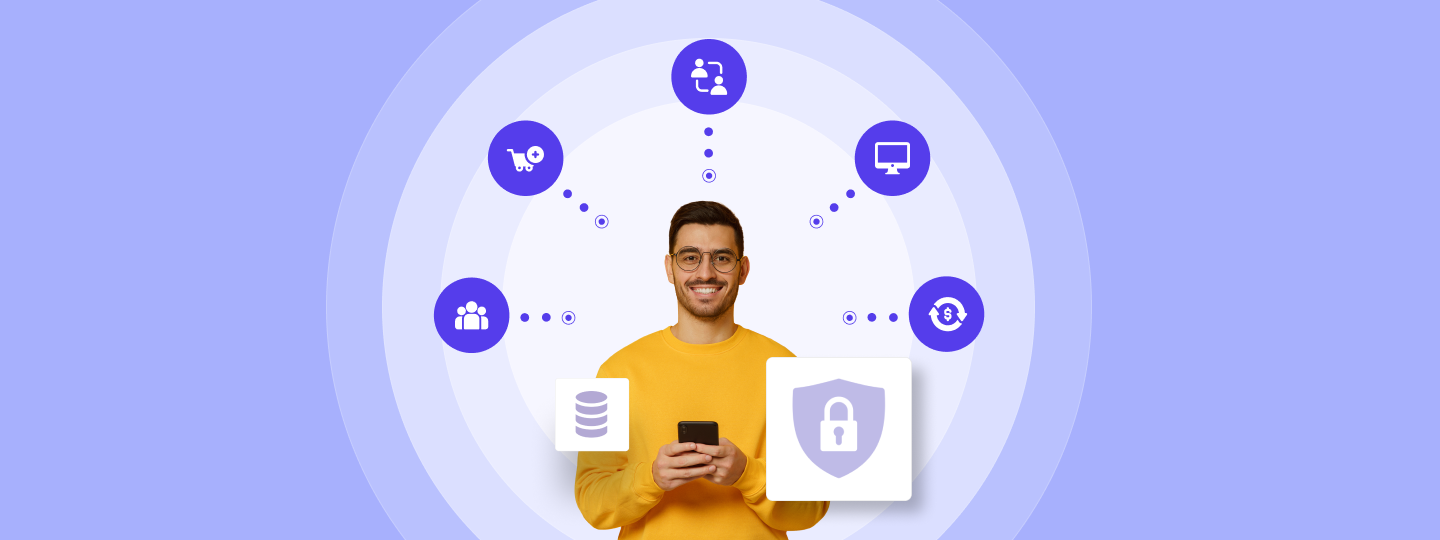The goal of every business is to eventually get more conversions, high customer loyalty, and brand advocacy. And if you can crack the code of user engagement, each of these things will take care of itself.
One of the best ways to skyrocket your user engagement is through web personalization — a powerful strategy that enables businesses to connect with their audiences on a deeper level.
Modern consumers expect brands to go beyond generic interactions and offer personalized experiences that resonate with their individual preferences and needs.
Web personalization means customizing your website to match each user’s interests, behavior, and demographics. So, when someone visits your site, they get content, design, and a user experience that feels tailor-made just for them.
It makes customers feel like you “get” them, which makes them more likely to stick around, explore more, and maybe even become loyal customers.
It’s all about making that connection and keeping them engaged.
In this post, we’ll provide you with tried-and-tested website personalization strategies and some web personalization examples for inspiration.
Let’s dive right in!
8 Web Personalization Strategies To Boost User Engagement
Here are eight web personalization strategies that will ensure that your users spend more time on your website, explore more products/services, and convert!

1. Affinity-based personalization
Understanding user affinity is crucial for creating personalized experiences that truly engage your individual visitors.
Affinity profiling involves assigning scores to users based on their interactions with products, helping predict the most relevant items for them in the future. By capturing engagement types and product attributes, marketers can calculate affinity scores and build profiles that rank preferred product colors, categories, and brands.
Affinity scoring involves assigning weights to each interaction type based on its level of intent.
For instance, a purchase might receive a weight of 4X, while an add-to-cart gets 3X, and a product view gets 1X. The scores are multiplied by the attribute value count, considering both the interaction type and recency of each interaction.
The resulting affinity profiles help showcase products users are more likely to engage with at any given moment.
Using ML, you can further enhance the flexibility and personalization of affinity models, unlocking new possibilities for predicting user preferences accurately.
By exposing and controlling affinity information, marketers can tailor campaigns to unique business needs and better predict individual preferences. And the more user sees a product they like, the more likely they’re to engage with your content — taking user engagement to a whole another level.
2. Activity-based personalization
Activity-based personalization focuses on analyzing user actions, such as clicks, browsing patterns, cart additions, and more, to create personalized experiences on a website.
Understanding these interactions helps businesses gain insights into individual preferences and intent, enabling them to deliver targeted content, product recommendations, and offers.
By tracking click behavior, businesses can identify users’ immediate interests. Browsing patterns reveal the user journey, guiding subsequent interactions. Analyzing cart additions and wishlist items allows personalized product recommendations. This relevance keeps users engaged and encourages them to spend more time exploring the site.
Businesses can also monitor time spent on pages, which indicates engagement levels, helping prioritize content and products. You can offer personalized discounts based on user preferences and price sensitivity. Moreover, dynamic website elements, like pop-ups, enhance user engagement by providing more relevant information.
The seamless user journey created through activity-based personalization fosters stronger user connections, increasing engagement and brand loyalty.
3. Past purchase / engagement-based personalization
One of the most effective ways to personalize a website is by analyzing customers’ past purchasing history and engagement data. This approach allows businesses to tailor product and category pages that showcase items similar to a customer’s tastes and preferences.
The personalized product and category pages not only capture users’ attention but also keep them immersed in exploring the site further.
Customers are more likely to click on items that appeal to their tastes, leading to extended browsing sessions. As users spend more time on the website, they are exposed to a broader range of products, increasing the chances of discovering new items that capture their interest.
By leveraging this data-driven personalization strategy, businesses can significantly enhance user engagement and encourage customers to spend more time on their websites.
Past purchase-based personalization complements the customer journey by streamlining the search process. Instead of sifting through countless products, customers are presented with options that match their preferences, saving time and effort.
Data-driven web personalization has become a game-changer as businesses strive to provide tailored experiences that resonate with their customers and drive growth.
4. Aggregated consumer-based personalization
Aggregated consumer-based personalization involves analyzing the interests and buying behavior of customers with similar characteristics, such as demographics, preferences, and purchase history.
By identifying patterns and popularly bought-together items among this group, businesses can offer personalized recommendations and promotions that resonate with a wider audience.
The power of aggregated consumer-based personalization lies in its ability to tap into collective insights. Instead of focusing on individual customer data, you can analyze the preferences of a segment of users with common traits.
This approach allows for more generalized but still highly relevant recommendations that cater to the interests of a broader customer base.
By showcasing popularly bought-together items, businesses encourage users to discover complementary products they might not have considered. This increases the average order value and enhances user engagement by presenting customers with valuable recommendations that align with their interests. Users who see products that complement their purchases or preferences are more likely to explore further and spend more time on the website.
This approach stimulates a sense of community among customers. When users feel that like-minded individuals share their preferences, they become more invested in the brand and its offerings. This sense of belonging creates a positive user experience, leading to higher engagement and brand loyalty.
5. Geotargeting-based personalization
Geotargeting, the art of delivering personalized content and product recommendations based on users’ geographic location, is a powerful tool to increase website user engagement.
Collecting location data through various means like direct inquiries, cookies, and social media allows businesses to offer an individualized experience that resonates with users in specific regions.
With geotargeting, websites can provide users with content that is relevant to their location, such as displaying localized promotions, seasonal products, or regional events. This level of personalization creates a sense of familiarity and connection with the website, boosting user engagement as visitors feel the website caters to their specific needs and interests.
Geotargeting also facilitates personalized product recommendations based on local preferences and buying behavior. When users see products that are popular or trending in their area, they are more likely to engage with the content and explore further.
You can also customize shipping costs and options based on the user’s location, creating a seamless and convenient shopping experience that encourages users to complete their purchases.
If you don’t want your visitor to close your website just because they think that you don’t serve at their location, you must use the geotargeting-based website personalization strategy.
6. Referral source-based personalization
Businesses can create customized experiences that resonate with users’ intent and interests by targeting visitors based on their referral sources.
Segmenting the audience by referral source allows websites to apply specific rules to each group, tailoring the content and offers to match their expectations.
For instance, a visitor coming from a social media link may be interested in the product, so showing them a relevant product offer is likely to capture their attention and drive engagement.
On the other hand, users arriving through a Google search are more likely to seek information about the product or service. Providing informative content and educational resources aligns with their current stage in the customer journey, fostering a positive user experience and keeping them engaged.
By understanding where users are coming from and their probable intent, referral source-based personalization enhances user engagement by creating a seamless and relevant experience.
Visitors feel that the website understands their needs and provides content that aligns with their expectations, leading to increased time spent on the site and a higher likelihood of conversion.
As visitors feel more connected to the website, they are more likely to explore further, engage with other features, and potentially become loyal customers.
7. Psychographic-based personalization
Psychographic-based web personalization allows you to enhance the user experience by delving into the deeper aspects of your customers’ personalities, beliefs, values, and motivations.
Understanding users’ psychographic characteristics goes beyond basic demographics and surface-level interests. It involves analyzing their attitudes, opinions, lifestyle choices, and preferences to comprehensively understand what drives their behavior.
By adapting website content to align with psychographic factors, businesses can create a sense of connection and relevance that fosters a more meaningful and engaging experience.
For instance, users with environmentally conscious beliefs and values might appreciate a website that emphasizes sustainable practices and eco-friendly products. On the other hand, users motivated by innovation and cutting-edge technology would respond well to content highlighting the latest advancements and trends.
By curating content and experiences that appeal to specific interest groups, websites can create a shared experience that encourages users to engage with each other, share feedback, and become brand advocates.
8. Predictive segmentation and personalization
Predictive segmentation is a technique that allows you to create segments based on the user’s propensity for a defined action, such as their likelihood of making a purchase. Like lookalike audiences, predictive segments leverage machine learning to create a list of users with a ‘likeliness to’ perform a certain action, such as likely to purchase or churn.
With the help of predictive segmentation, businesses can proactively personalize the communication across channels, driving back their audience to key touchpoints like the website with more contextual messages. This makes each of the campaigns doubly effective, boosting the overall engagement.
BONUS READ: How to get started with predictive segmentation for personalization
5 Web Personalization Examples For Inspiration
Let’s see how these five brands are leveraging web personalization to boost their user engagement:
1. Powerlook
Powerlook is one of India’s fastest-growing e-commerce brands offering a unique range of men’s casual wear.
They use an in-line web personalization strategy to create a personalized experience for every user based on multiple user attributes and custom events. Powerlook also recommends relevant products to its customers based on their browsing behavior and past purchases.

As a result of web personalization, Powerlook has significantly increased its user engagement, resulting in over 300% increase in unique conversions.
2. Happilo
Happilo, a gourmet health food brand, gives its consumers one of the largest collections of dry fruits & snacks. And it’s also one of the best web personalization examples in terms of output generated.
At one time, Happilo was unsatisfied with its repeat order frequency and retention rate. But they were able to fix it by showing personalized and relevant content to their customers.
They analyzed and incorporated user attributes, behavior, and on-site personalization to give an optimal platform experience to their customers. Because of web personalization, the customer experience improved, leading to high user engagement and a 286% lift in abandoned cart recovery.

3. Starbucks
Starbucks, the renowned coffee chain, is undoubtedly the best web personalization example to create delightful and engaging experiences for its customers.
Through a focus on user preferences and purchasing history, the Starbucks app provides personalized recommendations for coffee blends, food items, and beverages tailored to each individual’s taste.
By analyzing user data, Starbucks ensures that customers are presented with content that aligns with their unique preferences, increasing user engagement and satisfaction.
Location-based personalization is another essential aspect of Starbucks’ web strategy, as the app suggests nearby store locations, making it convenient for customers to find the nearest Starbucks outlet.
This personalized feature enhances user engagement as customers can easily access their favorite coffee shop wherever they are.
4. Sephora
Sephora, a famous beauty e-commerce brand, excels in website personalization giving personalized recommendations for products and content based on their preferences, skin type, hair type, tutorials, past purchases, and browsing history.
By analyzing customers’ beauty profiles, Sephora curates personalized product suggestions, ensuring that users are presented with items that resonate with their specific needs and interests.
5. Zomato
Zomato is India’s leading food delivery app that leverages web personalization to provide users with food recommendations based on each user’s browsing and purchasing history.
By analyzing this data, Zomato ensures that customers are presented with restaurant options and dishes that match their preferences, driving higher user engagement and order frequency.
Zomato’s push notification strategy is another example of effective personalization. The app sends timely notifications to users, featuring new and favorite dishes and restaurants based on their order history, location, and time of day.
This tailored communication keeps users informed and engaged, encouraging them to explore new dining options and make repeat orders.
Conclusion: Web Personalization Boosts User Engagement
Web personalization has emerged as a game-changer in boosting user engagement and driving business success. By learning from user interactions and adapting your website experience accordingly, you can create personalized and relevant journeys that resonate with the audience on a deeper level.
The key to effective web personalization lies in active customer segmentation and real-time adaptation. By segmenting users based on various attributes such as demographics, browsing behavior, past purchases, and referral sources, businesses can tailor content and recommendations to meet individual preferences and needs.
Personalization surely does the job. But you should also consider the fact that only 12% of marketers are satisfied with their personalization efforts.
Doing personalization right brings the best output. And for this, you must use tools and technologies that can analyze user data in real-time and deliver personalized experiences seamlessly.
Platforms like WebEngage empower businesses to take full control of their web personalization strategy. With WebEngage, businesses can efficiently collect and analyze user data, create dynamic segments, and deliver real-time personalized content, recommendations, and offers.
Want to discover how WebEngage can help your brand take personalization to the next level?


































 Harshita Lal
Harshita Lal
 Surya Panicker
Surya Panicker
 Ananya Nigam
Ananya Nigam